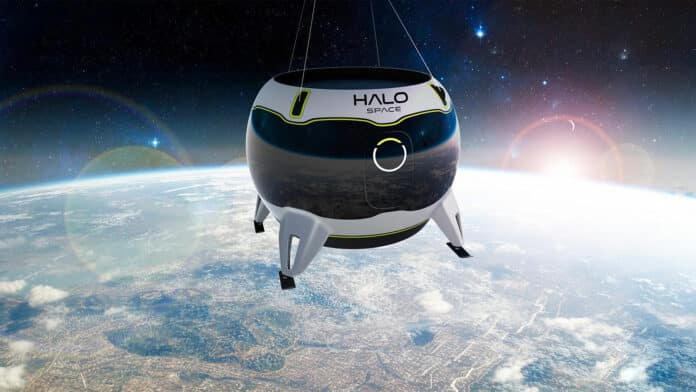A near space tourism company, HALO Space, announced it will embark on its sixth test flight for its pioneering space tourism craft in Saudi Arabia this June with conditional approval from the Communications, Space and Technology Commission (CST) — the Saudi Arabia authority responsible for space regulation.
The company says this will be the first time all technologies powering HALO Space’s emission-free flight are tested together — a test no other company in the sector has ever performed. The test flight will launch HALO’s second real-size prototype capsule, which will try to reach 20 miles (32 kilometers) above Terra Firma.
“As the most advanced near space company in the sector in terms of technical development, safety is our top priority, which is why we’ve consistently tested each system that makes up our flight program,” said HALO Space CEO Carlos Mira. “We are on a mission to make space travel more safe, accessible and affordable. This test will rigorously validate the integrated operation of all critical systems, bringing us one step closer to our goal.”
HALO plans to make commercial flights to space a reality by 2026, starting at $164,000 — a fraction of the price of orbital and suborbital flight offerings. Their objective is to send 10,000 individuals to space within this decade to experience the Overview Effect — viewing the blue halo around the curvature of the Earth, which is said to be a life-changing experience.
“To see the darkness of space against the blue marble is almost a religious experience,” said Mira. “I’ve spoken with several astronauts about the feeling of profound transformation when you view the Overview Effect. Everyone should get the chance to see our home from such a view.”
The helium balloon-powered ascent is gradual and doesn’t cause heavy acceleration or G-forces, which makes it accessible to almost anyone without the need for special training. The flight time is 4-6 hours, including up to 2 hours at a maximum altitude of 35 km, providing ample opportunity to take in the breathtaking 360º views of Earth with much larger windows than those on traditional planes or rockets.
HALO Space is committed to making space travel accessible to everyone who desires to travel to space, including those who cannot afford the cost of a flight. Their initiative is to develop a program that will enable these individuals to fly by removing the barrier of cost.
HALO’s flight program is being developed by highly experienced engineers with over three decades of professional experience. HALO is collaborating with aeronautical and space authorities in multiple countries, including the U.S., Australia, Saudi Arabia, and Spain. The four chosen bases for HALO’s operations have been selected based on their meteorology, territory, and airspace suitability for safe near-space stratospheric flights.
HALO has set a high standard for safety, requiring the probability of catastrophic failure to be lower than 1 in 100 million. It’s also implementing redundancy measures by creating duplicate backup systems in case the primary systems fall short of the required level.
“It is magnificent to see our vision of making space flight more accessible come to life,” said Mira. “To prove our concept and showcase all systems working together will signal to the world that near space tourism with HALO Space is ready for lift-off.”
